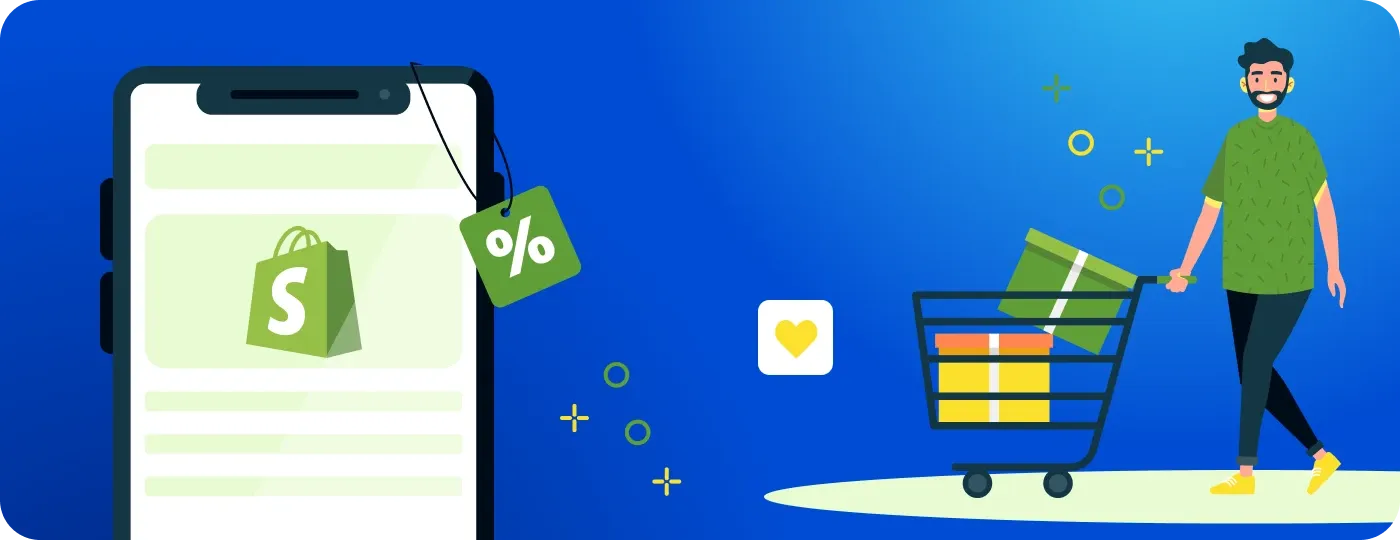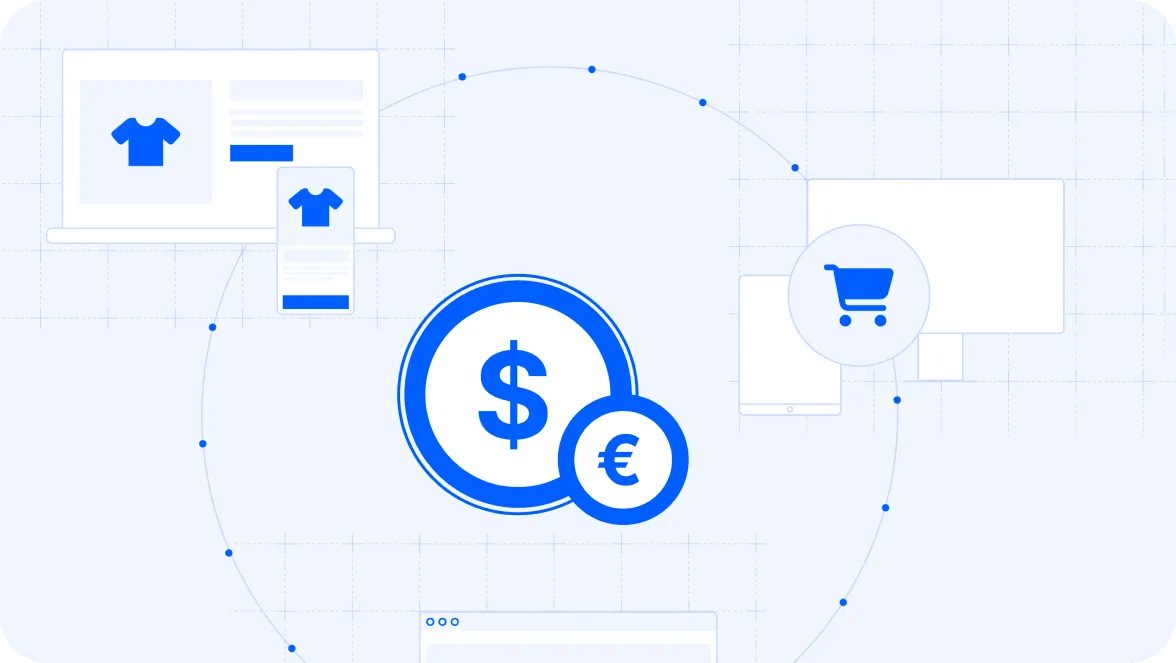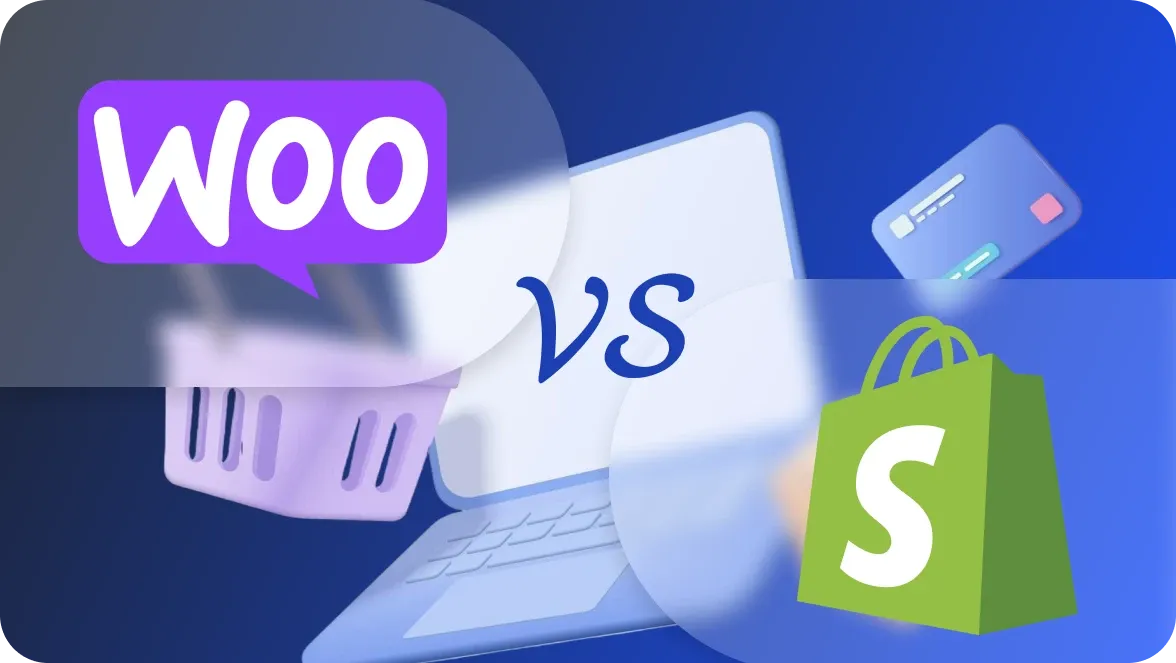
Shopify headless commerce is the detachment of the frontend (user interface) from the backend (commerce logic and data), connecting them via APIs. If you’re using Shopify and feeling limited by its performance, customization options, or multichannel capabilities, headless commerce might be the solution. Or perhaps you’ve heard of it but aren’t sure if it’s worth the investment or how to migrate without disrupting your existing store.
We’ve created a clear, practical Shopify headless commerce guide that explains what Shopify headless really is, along with its benefits and limitations, as well as key considerations for businesses. You’ll also find implementation strategies and insights from DigitalSuits’ hands-on experience in Shopify headless development, building flexible, high-performing headless Shopify solutions that drive results.
TL;DR: How Shopify headless unlocks customization, performance, and scalability for your store
Shopify headless commerce is the decoupling of the frontend (what users see) from the backend (where data and processes live).
The benefits of headless Shopify include better performance, limitless customization, improved scalability, seamless omnichannel presence, future-proof tech stack, accelerated development, and enhanced user experience.
The implementation of headless Shopify can be done in-house, via a Frontend-as-a-Service (FaaS) solution, or through a specialized agency.
What is a headless Shopify store?
Let’s begin with a common question: What is a headless Shopify store? In simple terms, a headless Shopify store is one where the frontend (the part your customers can see and interact with, such as your website or mobile app interface) and the backend (the systems provided by Shopify that allow you to work with the products, orders, and customer data) are separated. The communication between these two layers is provided through APIs, according to which you have complete control over how your storefront is displayed.
How does headless Shopify differ from traditional Shopify?
The difference between traditional Shopify and headless Shopify lies in how the frontend and backend are connected. In traditional Shopify, the frontend is tightly coupled with the backend, so you can only use the in-built Shopify themes. Such an arrangement can become restrictive when it comes to customization, scaling, and performance optimization. With Shopify headless commerce, these constraints disappear. That means you can create a bespoke storefront with any technology or framework without having to build your own ecommerce infrastructure from scratch.
How does headless Shopify work?
Instead of using built-in Shopify themes and theme editor, you develop your own frontend from the ground up using a framework, Frontend-as-a-Service, or Shopify Hydrogen to speed things up. The backend part is still run on Shopify, which does all the inventory and checkout processes, as well as security and payment processing. Herein lies the true beauty of Shopify headless commerce, which lets brands develop blazing-fast, fully customizable storefronts across a variety of channels and still have Shopify's powerful ecommerce engine.
Content management is also more versatile in a headless commerce Shopify installation. You have such options as Contentful, Sanity, or Strapi, or you can utilize Shopify as a headless CMS. All these solutions give the content teams the ability to control digital experiences without touching the development process, so they can update faster, support multiple languages, and publish across the omnichannel.
Benefits of headless Shopify
Going headless with Shopify unlocks a range of powerful benefits for your online store, enabling your business to scale, innovate, and deliver exceptional customer experiences. Here’s a closer look at the advantages of headless Shopify:
- Better performance
A decoupled front-end and back-end means that pages are executed faster due to improved rendering and delivery of data. With Shopify headless, developers can pick the right modern framework, such as React.js, Vue.js, or Shopify Hydrogen and Oxygen to create a seamless shopping experience that converts more shoppers.
- Limitless customization
One of the key advantages of headless commerce is the unlimited flexibility that enables you to move beyond the same-old templates. Headless architecture provides you with maximum customization in a storefront, permitting brands to be unique in any way they like, whether redesigning the product page, personalizing the checkout experience, or creating a custom mobile experience.
- Improved scalability
Need to launch in new regions or add new features fast? With headless Shopify, you may scale up faster, integrating APIs, adding new services, or modifying frontended, you can overhaul the core functionality of your store. It is the best arrangement to develop brands with growing needs.
- Seamless omnichannel presence
Provide a constant customer experience throughout all contact points: a web, a mobile application, a POS terminal, or even a smart device. Thanks to Shopify headless commerce, you can have total control of your brand presence across the platforms, which ensures that you manage all frontends with the help of only a single backend.
- Future-proof tech stack
Headless Shopify integrates with plenty of third-party services and technologies. Whether it is a headless CMS such as Strapi or an AI-based search or analytics platform, your team can work with the latest and most innovative tools as well as be on top of the current trends in technology.
- Accelerated development
A decoupled architecture will allow your frontend and backend teams to operate separately, reducing the development time, and will help you deliver updates and new features to the market earlier.
- Enhanced user experience
Each step of the customer experience can be user-optimized. A headless store is easier to navigate and allows customers to remain interested in products since it is loaded faster, personalized, and designed with mobile users in mind.
Headless Shopify challenges and limitations
There are several limitations and challenges of going Headless with Shopify you should keep in mind:
- Technical сomplexity
In contrast to the standard Shopify setups, headless commerce needs a solid technical background. No drag-and-drop theme editor is available, and your team will have to create and manage their own custom frontends, operate APIs, and make sure that any systems are well-connected.
- High upfront investment
The creation of headless Shopify is an investment. The budget depends on the complexity of your store, the technology stack, and the level of customization. There are also long-term costs such as hosting, server maintenance, and custom development, which you need to consider. For a deeper breakdown, check out this article on the cost of going headless with Shopify.
- Talent and expertise requirements
Effective headless architecture requires skilled developers, designers, and QA engineers. You might still have to recruit new team members, train your existing employees further, or cooperate with an agency to hire Shopify Hydrogen experts.
- Time-consuming transition
Migration to headless architecture is a strategic redesign, not a simple upgrade. The migration might comprise redevelopment of your shop facade, the addition of a new CMS, and reworking internal workflows. A phased approach is often necessary to avoid disruptions.
- Ongoing maintenance
Headless usually requires a much more hands-on approach than any Shopify store. To make it all run smoothly, you will have to be aware of the updates, manage API changes, and address potential compatibility problems.
Shopify headless readiness checklist
Before switching to Shopify headless commerce, ensure you're prepared for the change. This is what should be considered:
Technical capacity of your team. Does your team consist of skilled developers proficient in APIs, React, and other frontend frameworks?
Content requirements. Do you need more options in terms of page designs, languages, or multi-media broadcasting?
Growth plans. Are you expanding to new regions, storefronts, or platforms and need better flexibility?
Time and budget. Can you invest in development, integration, and long-term maintenance?
How to implement headless Shopify?
There are three main approaches to the implementation of headless Shopify: building with your in-house development team, utilizing Frontend-as-a-Service (FEaaS), or collaborating with a specialized agency. Each route has its own advantages depending on your business objectives, team performance, and timelines.
In-house development team
If your team has technical expertise and you want full creative control, building your own headless frontend might be a suitable option. Shopify offers such potent tools as Storefront API and Hydrogen framework (based on React) that allow you to connect your backend with a custom frontend and manage the store experience from scratch.
Choose this approach if:
Your engineering team is skilled and at ease with contemporary frontend frameworks such as React, Vue.js, Angular, or Next.js.
You want full control over the design and functionality of the storefront.
You are comfortable with the possibility that the development process may take some time and can support it.
Avoid this approach if:
Your team is small or inexperienced.
You need to launch your headless store quickly.
You cannot afford the constant maintenance and upgrading.
Frontend as a Service
The Frontend-as-a-Service platform makes developing headless applications easy with ready-made, reusable components, hosting, and performance optimization, freeing developers' time and fast-tracking time to market. It is a great option when your team wants to focus on delivering user experience and business logic without managing frontend infrastructure complexity.
Choose this approach if:
Scalability, performance, and in-built best practices are essential to you.
You want your marketing team to have more agility without relying heavily on engineering resources.
You need template-based and ready-to-use integrations.
You want a fast, low-maintenance route towards a headless storefront.
Avoid this approach if:
You must have complete customization and control over the storefront.
You have a limited budget that constrains outsourcing.
Partnering with an agency
Your in-house team may not have the experience to develop a headless frontend, and in this case, an agency can be a savvy choice. The specialized Shopify partners can set it up, design it, and ensure integration as well as long-term support and optimization.
Choose this approach if:
You need professional assistance with headless development.
You require the outsourced continuous technical maintenance.
You can compromise some of your autonomy for better convenience and support.
Avoid this approach if:
You desire to have complete control of development.
Budget or compliance limits prevent outsourcing.
DigitalSuits’ examples of Shopify headless development
As a headless Shopify development company, DigitalSuits has extensive expertise in Shopify’s headless architecture, having successfully delivered solutions for brands like Namza, OURA, and more. To understand the headless Shopify meaning in a real-world context, let’s take a look at examples of Shopify headless development powered by DigitalSuits’ team.
Headless ecommerce development for skincare brand Namza
DigitalSuits collaborated with Namza, a brand of grooming products that combines natural components with advanced technology. The goal was to create a new Shopify headless commerce store with the help of Instant Commerce, expanding reach and increasing sales. Using Shopify for the backend and Instant Commerce for the frontend, the client encountered design and functionality limitations, as Instant Commerce is a relatively new platform.
Our specialist collaborated with their team to create custom code and provide an eye-pleasing design that reflects Namza's vision. The site features easy navigation, an About Us page, a contact form, a blog to establish brand authority, and social media integration to foster engagement. The client received a multilingual frontend with improved UX, easier maintenance, enhanced performance, and management due to the solutions, thanks to the single codebase.
Headless Shopify website development for apparel company OURA
DigitalSuits partnered with OURA, a US-based apparel brand known for its innovative textiles. The company needed a flexible and scalable website solution that accompanied growing business objectives, such as higher SEO, content management, and UI/UX.
To meet these needs, we built a Shopify Plus headless website, reusing the existing admin panel to optimize budget and time. We have applied Shopify Plus to perform all the backend tasks and headless configuration to streamline the delivery of dynamic content through different channels and platforms to make marketplace and app sales easier. To solve SEO issues, we established a serverless proxy that smoothly redirects URLs and used Amazon CloudFront, which loads pages faster.
As a result, OURA received a high-performing yet SEO-friendly site with advanced content management features, increased traffic - more than 1,000 new users per day - and a scalable foundation for future growth in the US and EU markets.
Shopify headless launch for a global beauty brand
DigitalSuits partnered with a 135-year-old cosmetic brand to launch a new Shopify headless store, revitalizing its digital presence, enhancing the user experience, and expanding into new markets. We joined the project to help launch a responsive, scalable, and high-converting DTC store under tight timelines. The solution our specialists provided, based on the Shopify Plus headless architecture, was built using Hydrogen and Oxygen at the frontend, along with the integration of Sanity.io CMS. This setup allowed full flexibility, high performance, and customization.
Our team has also added integrations with Emarsys, Refersion, Skeepers, CyberSource, PowerReviews, and others to increase functionality. The outcome is a visually polished store with custom content workspaces, fast-loading pages, and seamless omnichannel delivery. We even resolved the delay in distribution by utilizing backend processes to sort it out, as well as enhancing efficiency in order fulfillment. The final product is a high-performing Shopify headless store that increases the branding, marketing, and customer satisfaction.
The bottom line
After exploring "What is headless Shopify?", its advantages, and our headless case studies, it's clear that Shopify's headless architecture delivers outstanding flexibility, performance, and scalability capabilities, which in turn make it a valuable tool for growing and aspiring ecommerce brands. It is beneficial for companies with complex needs, multi-storefront operations, or plans to expand into global markets, where control, customization, and speed are essential.
Whether you already have an intention to migrate to headless or need to hire Shopify headless development agency to implement your idea, we are here to assist you. Our agency specializes in headless Shopify development. Contact us so we can discuss how we can help you.
Frequently asked questions
Why use a headless CMS with Shopify?
A headless CMS Shopify system enables marketers to create and publish their own content, support multiple languages, and deliver content faster without requiring code changes.
How does Shopify headless commerce improve website performance?
By separating the frontend from the backend parts, Shopify headless allows you to optimize the UI for responsiveness utilizing the latest technology. Also, the global CDN of Shopify ensures fast and reliable content delivery. Contact us for expert consultancy on how Shopify headless can improve your store.
Can I use headless Shopify for multichannel sales?
Yes. Using headless Shopify, you can link a single backend with multiple frontends: web, mobile, kiosks, and more, to enhance an omnichannel connection.







































Was this helpful?
0
No comments yet